Abstract
The sensitivity of excised hypocotyl segments to indoleacetic acid (IAA) in two assays, ethylene production and elongation, was determined in the ethylene-requiring tomato (Lycopersicon esculentum Mill.) mutant, diageotropica (dgt), and its isogenic parent, cv VFN8. Endogenous (uninduced) ethylene synthesis rates were slightly lower in dgt hypocotyls than in VFN8 hypocotyls. Ethylene production was essentially unaffected by IAA in dgt, but was stimulated up to 10-fold by 10 micromolar IAA in VFN8. Elongation of dgt hypocotyls was also insensitive to concentrations of IAA as high as 100 micromolar, as compared to significant elongation of VFN8 hypocotyls in response to 0.1 micromolar IAA. A range of IAA analogs active in VFN8 was also ineffective in stimulating elongation of dgt hypocotyls, suggesting that the differences were not due to rapid metabolism of IAA by dgt tissues. Auxin-induced elongation of VFN8 hypocotyls was unaffected by 2,3,5-triiodobenzoic acid and naphthylphthalamic acid, indicating that polar auxin transport was not a factor in these experiments. Exogenous and auxin-induced ethylene had no effect on the elongation respone of either genotype, nor did exogenous ethylene restore the sensitivity of dgt hypocotyls to IAA. Despite their apparent insensitivity to auxin, dgt hypocotyls elongated dramatically and synthesized ethylene rapidly in response to 1.2 micromolar fusicoccin. These results suggest that the primary effect of the dgt mutation is to reduce the sensitivity of the tissue to auxin. As altered regulation of ethylene synthesis is only one symptom of this fundamental deficiency, dgt should more properly be considered to be the auxin-insensitive tomato mutant.
Full text
PDF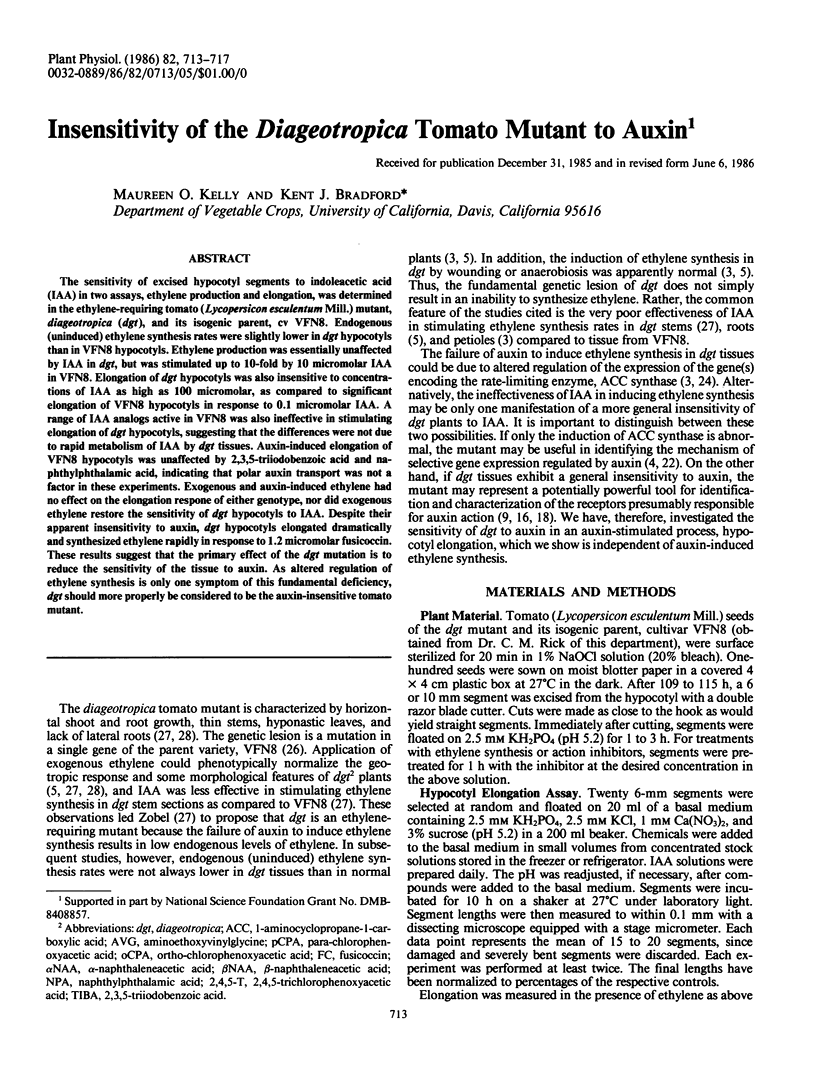
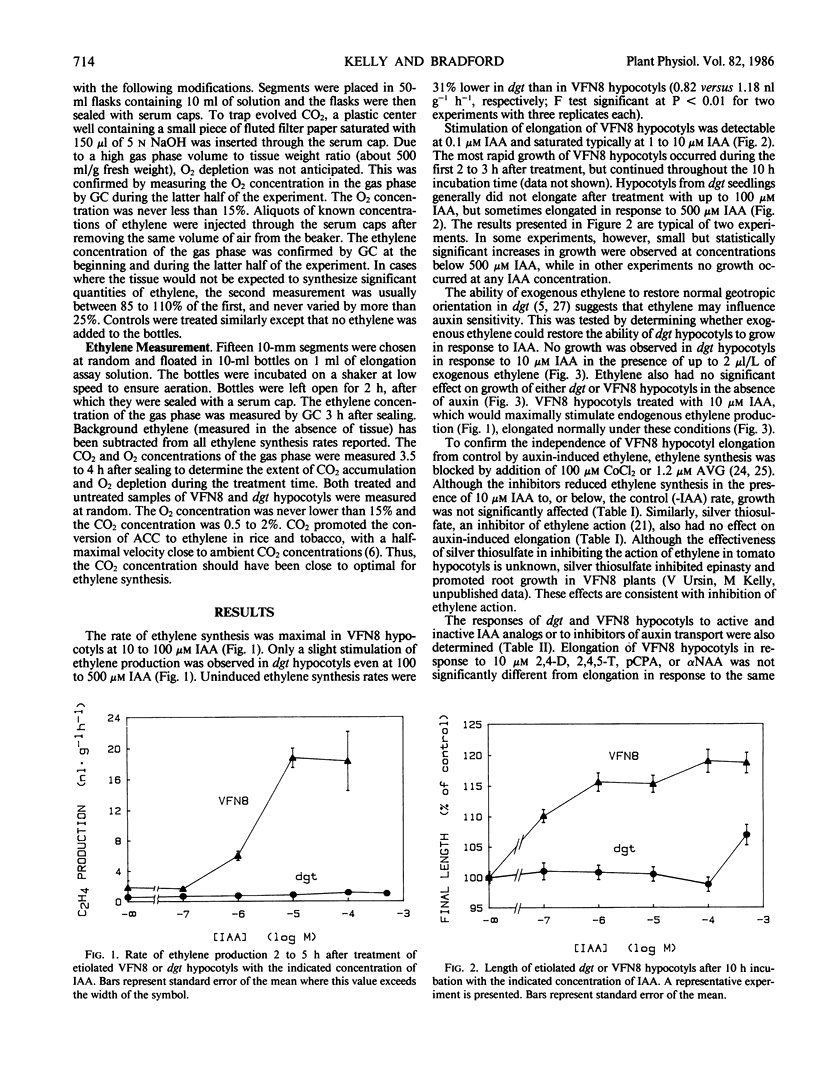
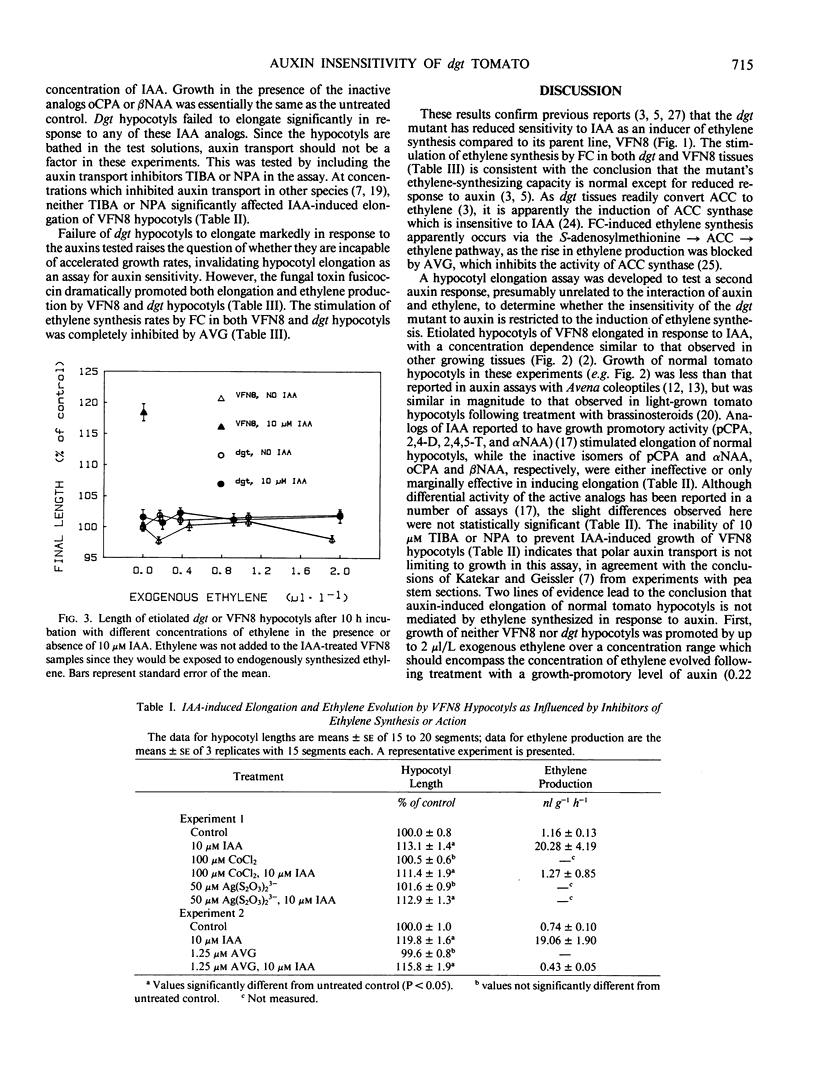
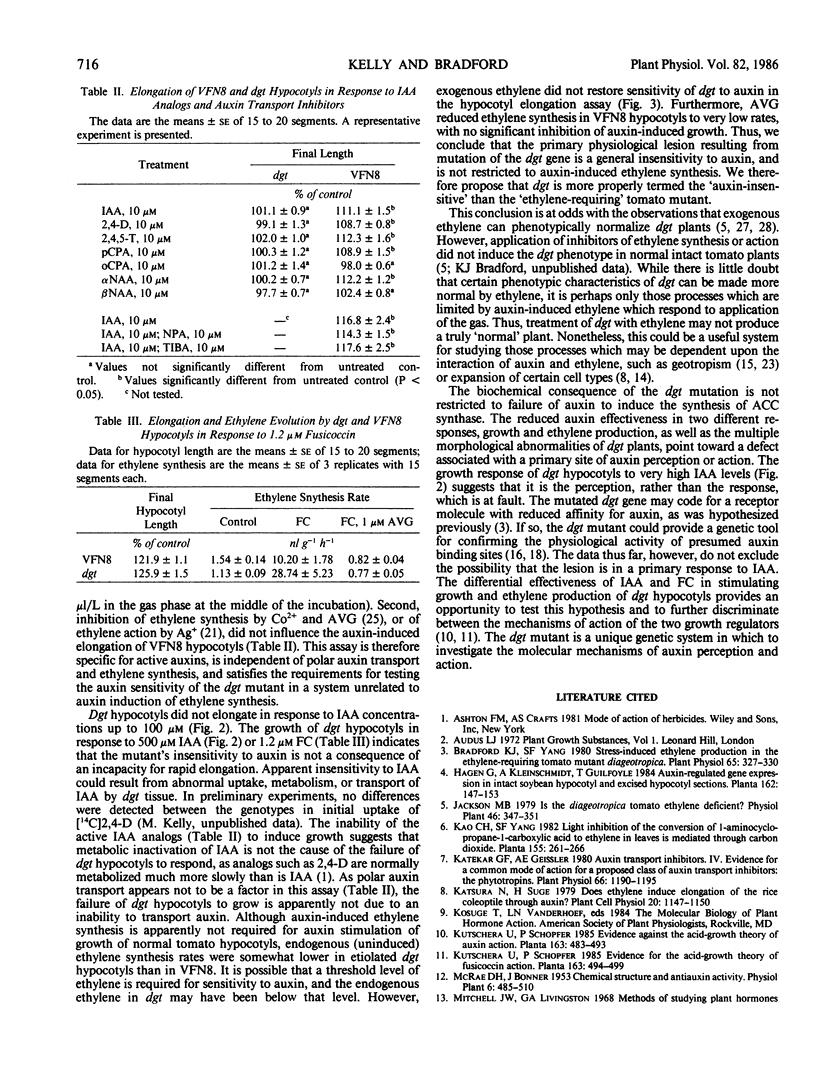
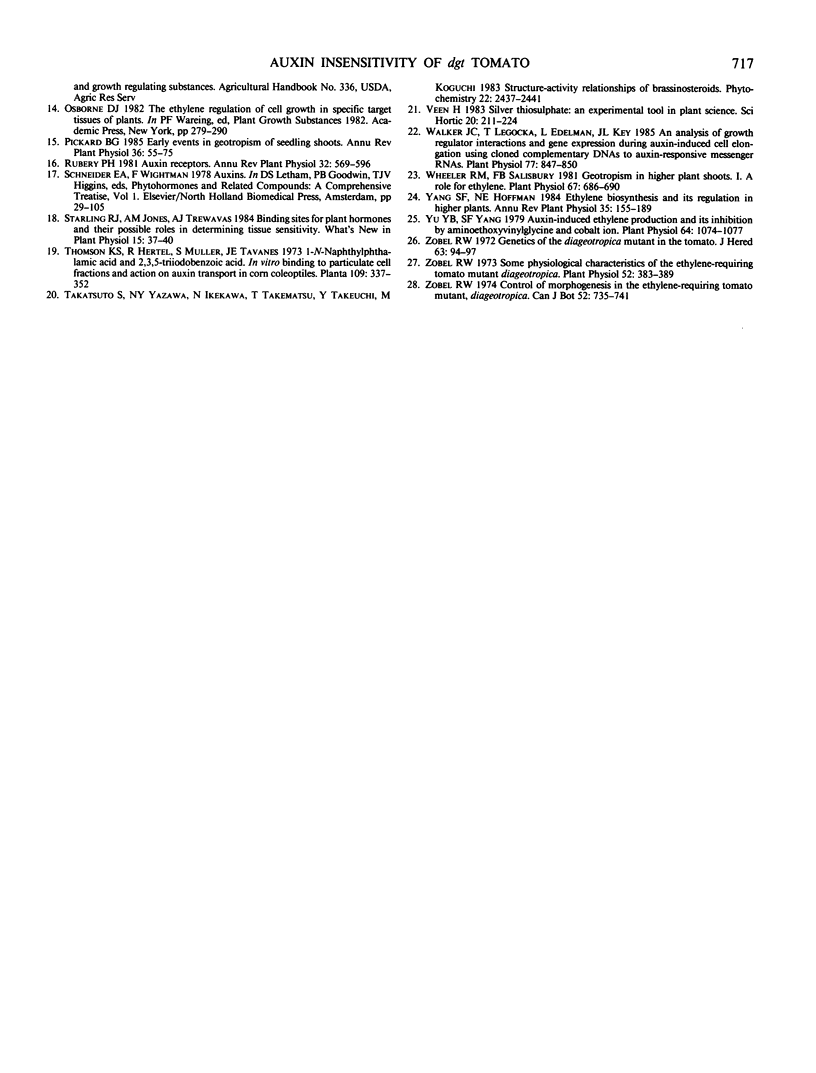
Selected References
These references are in PubMed. This may not be the complete list of references from this article.
- Bradford K. J., Yang S. F. Stress-induced Ethylene Production in the Ethylene-requiring Tomato Mutant Diageotropica. Plant Physiol. 1980 Feb;65(2):327–330. doi: 10.1104/pp.65.2.327. [DOI] [PMC free article] [PubMed] [Google Scholar]
- Katekar G. F., Geissler A. E. Auxin Transport Inhibitors: IV. EVIDENCE OF A COMMON MODE OF ACTION FOR A PROPOSED CLASS OF AUXIN TRANSPORT INHIBITORS: THE PHYTOTROPINS. Plant Physiol. 1980 Dec;66(6):1190–1195. doi: 10.1104/pp.66.6.1190. [DOI] [PMC free article] [PubMed] [Google Scholar]
- Pickard B. G. Early events in geotropism of seedling shoots. Annu Rev Plant Physiol. 1985;36:55–75. doi: 10.1146/annurev.pp.36.060185.000415. [DOI] [PubMed] [Google Scholar]
- Walker J. C., Legocka J., Edelman L., Key J. L. An Analysis of Growth Regulator Interactions and Gene Expression during Auxin-Induced Cell Elongation Using Cloned Complementary DNAs to Auxin-Responsive Messenger RNAs. Plant Physiol. 1985 Apr;77(4):847–850. doi: 10.1104/pp.77.4.847. [DOI] [PMC free article] [PubMed] [Google Scholar]
- Wheeler R. M., Salisbury F. B. Gravitropism in Higher Plant Shoots: I. A ROLE FOR ETHYLENE. Plant Physiol. 1981 Apr;67(4):686–690. doi: 10.1104/pp.67.4.686. [DOI] [PMC free article] [PubMed] [Google Scholar]
- Yu Y. B., Yang S. F. Auxin-induced Ethylene Production and Its Inhibition by Aminoethyoxyvinylglycine and Cobalt Ion. Plant Physiol. 1979 Dec;64(6):1074–1077. doi: 10.1104/pp.64.6.1074. [DOI] [PMC free article] [PubMed] [Google Scholar]
- Zobel R. W. Some Physiological Characteristics of the Ethylene-requiring Tomato Mutant Diageotropica. Plant Physiol. 1973 Oct;52(4):385–389. doi: 10.1104/pp.52.4.385. [DOI] [PMC free article] [PubMed] [Google Scholar]


